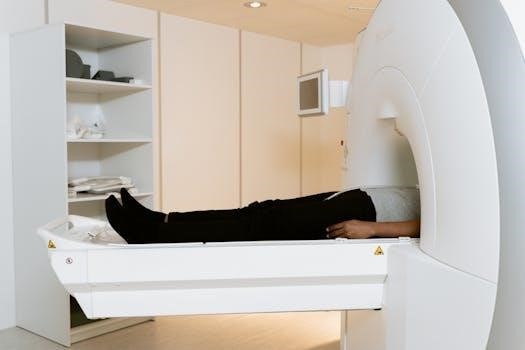speech and language assessment tools pdf
Speech and language assessment tools are vital for evaluating communication skills in children and adults. These tools vary in purpose and psychometric qualities, requiring careful selection by speech-language pathologists to address specific communication concerns.
The Role of SLPs in Assessment Selection
Speech-language pathologists (SLPs) play a crucial role in selecting the most appropriate assessment tools; This selection process is not arbitrary; it is driven by a thorough understanding of the individual’s needs, including their age, cultural background, and language profile. SLPs consider the severity of the suspected communication disorder and any factors that might affect language functioning. They meticulously review each tool, ensuring it aligns with the unique needs of the individuals they serve. Furthermore, SLPs are responsible for interpreting assessment data and making informed decisions based on the results. Their expertise guides the entire assessment process, from choosing the right tools to understanding the implications of the findings, ensuring that interventions are tailored to meet the specific needs of each person.
Types of Assessment Tools
Various assessment tools exist, including standardized tests, informal techniques, and screening tools. Each serves a unique purpose in evaluating speech and language skills across different populations and settings.
Standardized Tests in Speech and Language
Standardized tests are crucial for evaluating speech and language abilities, offering a consistent measure across individuals. These assessments often involve structured tasks and scoring criteria, allowing for comparisons to normative data. Examples include tests assessing receptive language, like the Peabody Picture Vocabulary Test, and comprehensive language evaluations like the Clinical Evaluation of Language Fundamentals (CELF). These tests provide valuable insights into a person’s strengths and weaknesses. However, clinicians must consider cultural background, age, and individual profiles when interpreting results, as they might not fully capture the nuances of communication for all individuals. Standardized tests often serve as a starting point in comprehensive evaluations.
Informal Assessment Techniques
Informal assessment techniques offer a flexible approach to evaluating speech and language, supplementing standardized tests. These methods often involve observation of a person’s communication in natural contexts. For example, observing a child’s spontaneous speech during play provides insight into their everyday language use. Clinicians might analyze language samples, noting vocabulary, grammar, and fluency. Tasks involving narrative retellings or following instructions can also be used. These techniques allow for a deeper understanding of communicative competence within real-world scenarios. Informal assessments are crucial for individuals who might not perform well on standardized tests, such as those from diverse backgrounds or with specific learning differences. They provide a holistic view of an individual’s communication abilities.
Screening Tools for Early Intervention
Screening tools play a crucial role in early identification of potential speech and language delays, facilitating timely intervention. These tools are designed to be brief and efficient, quickly identifying individuals who may require further evaluation. One example is the LEST, a standardized tool for early intervention. Screening often involves checklists or questionnaires that assess various aspects of communication, such as receptive and expressive language, articulation, and fluency. The goal is to catch delays as early as possible, allowing for interventions to be implemented during critical developmental periods. Early detection ensures that children with communication difficulties receive appropriate support and assistance to foster their language development. This approach can significantly improve outcomes.

Specific Assessment Tools and Their Uses
Several specific tools like the PPVT, CELF, and CASL-2 are frequently used to assess different areas of speech and language. These tools help identify specific strengths and weaknesses for focused intervention.
Peabody Picture Vocabulary Test (PPVT)
The Peabody Picture Vocabulary Test (PPVT), particularly the PPVT-4 and PPVT-5 editions, is a widely used assessment tool focusing on receptive vocabulary. It’s suitable for a broad age range, from 2.5 to 90 years, making it versatile for various populations. The PPVT assesses an individual’s ability to understand spoken words by having them match a word to a corresponding picture. This test is crucial for identifying receptive language deficits. Clinicians are responsible for ensuring the accurate administration and interpretation of the PPVT, adjusting for unique needs of individuals. The PPVT is valuable for determining the starting point for language intervention.
Clinical Evaluation of Language Fundamentals (CELF)
The Clinical Evaluation of Language Fundamentals (CELF) is a comprehensive assessment tool used to evaluate a broad range of language skills. The CELF is designed to assess both receptive and expressive language abilities, making it a valuable tool for identifying specific language deficits. This assessment tool helps speech-language pathologists in making diagnostic decisions. It can be used to monitor progress during intervention, aiding in adjusting treatment plans as needed. The CELF is an important assessment for understanding the full scope of language functioning in children and adults. Its comprehensive nature allows for a detailed analysis of language strengths and weaknesses.
Comprehensive Assessment of Spoken Language (CASL-2)
The Comprehensive Assessment of Spoken Language, Second Edition (CASL-2), stands as a standardized language assessment tool. It is designed to evaluate a wide array of oral language skills in individuals. This tool helps in identifying expressive and receptive language delays. The CASL-2 assists speech-language pathologists in diagnosing language disorders. It provides a detailed analysis of an individual’s spoken language abilities. This assessment is particularly useful for diagnosing Expressive Language Delay or Mixed Receptive-Expressive Language Disorder. The CASL-2 is a vital instrument in comprehensive language evaluations, providing valuable data for intervention planning. Its standardized nature ensures reliable and consistent results for clinicians.
SLES (Speech and Language Evaluation Scale)
The Speech and Language Evaluation Scale (SLES) serves as a valuable tool for speech and language clinicians. Its primary function is to aid in screening, assessment, and diagnostic decisions for children and adolescents facing speech or language challenges. The SLES significantly enhances the screening and referral process for students requiring speech and language services. This scale provides a structured approach to evaluate various aspects of communication. This includes both speech production and language comprehension. The SLES helps in making informed programming decisions for individualized intervention. Its use can streamline the identification of students who would benefit from specialized support. Ultimately, the SLES contributes to improving the efficiency and effectiveness of speech and language services.

Assessment in Specific Populations
Assessing diverse populations requires specialized tools and techniques. Considerations include bilingualism, hearing impairments, and autism spectrum disorder. These factors influence the selection and application of assessment methods.
Assessing Bilingual Children
Evaluating bilingual children presents unique challenges, as language delays may manifest differently across their primary and secondary languages. Standardized tests might not accurately reflect a bilingual child’s abilities, potentially leading to misdiagnosis if not carefully applied. Therefore, a multifaceted approach is essential, combining formal assessments with informal techniques and observations of language use in various contexts. It is crucial to consider the child’s language history, exposure, and proficiency in each language. Clinicians should also be mindful of cultural and linguistic differences, selecting tools that are appropriate and culturally sensitive. Furthermore, collaboration with families and caregivers provides valuable insights into the child’s communication patterns. Utilizing tools designed for bilingual assessment will provide a more comprehensive and accurate evaluation.
Assessment of Deaf and Hard of Hearing Children
Assessing deaf and hard of hearing children requires specialized approaches beyond typical speech and language evaluations. It is vital to consider the impact of hearing loss on language development, which might include speech, sign language or other augmentative and alternative communication (AAC) methods. Comprehensive assessments should involve evaluations of receptive and expressive communication, using tools appropriate for varying levels of hearing loss and communication modalities. Clinicians should be knowledgeable about the unique linguistic and cultural aspects of the Deaf community. It’s necessary to assess not only spoken language but also visual communication skills, such as sign language. Observations in natural settings and input from caregivers are essential to understand the child’s communication abilities holistically, and it is advised to seek guidance for best practice in assessment for this specific population.
Assessing Children with ASD
Assessing children with Autism Spectrum Disorder (ASD) requires a nuanced approach as they may perform within normal limits on standardized tests, particularly if those tests rely on static pictures. Standardized tools should be a starting point in ASD evaluations and should be supplemented with other assessment methods. A focus on pragmatic language skills, social communication, and nonverbal cues is crucial, considering their difficulties in these areas. Observational assessments of spontaneous speech during natural interactions are useful. In addition, it’s essential to assess communication across various contexts, and to involve caregivers to gain a complete picture of a child’s communication profile. The evaluation should also consider sensory sensitivities and behavioral differences that might affect performance and should utilize tools that assess both receptive and expressive language capabilities.

Practical Considerations in Assessment
Observation plays a crucial role in assessment, especially when formal tests are challenging. Monitoring progress during intervention is also vital, using tools that track changes in communication over time.
Importance of Observation in Assessment
Observation is a critical component of speech and language assessment, particularly for young children or individuals who may have difficulty with standardized testing. Direct observation allows clinicians to gather information about a person’s natural communication patterns in everyday settings. This includes how they initiate conversations, respond to others, and use nonverbal cues. Observing a child’s speech during play or a conversation can reveal aspects of their communication that might not be evident in a structured testing environment. Furthermore, observation can help to identify specific areas of strength and difficulty, providing a more holistic view of the individual’s communication skills. It’s especially helpful when standardized tests are not fully accessible to the individual being assessed. The data from observation enhances and complements formal test results, leading to better informed intervention planning. It is essential for comprehensive assessment.
Monitoring Progress During Intervention
Monitoring progress during intervention is crucial for ensuring the effectiveness of speech and language therapy. Regular assessments, both formal and informal, help track a client’s development over time. Scales administered by speech-language pathologists and primary caregivers can provide valuable insights into a child’s progress. These tools allow clinicians to identify if intervention strategies are working, and if adjustments need to be made. Monitoring involves ongoing data collection, including observations and standardized testing at regular intervals. This helps to identify areas where a client is making progress, and areas that still need more attention. The use of progress monitoring tools helps keep intervention focused and ensures that clients reach their full potential, making the process efficient and effective. This data-driven approach allows for a personalized and targeted treatment plan.

Resources and Further Information
For additional information, the ASHA website offers extensive resources. Explore their online store for materials related to speech-language pathology and audiology billing codes, and other helpful tools.
ASHA Website and Resources
The American Speech-Language-Hearing Association (ASHA) website serves as a comprehensive hub for professionals seeking information on speech and language assessment tools. It provides extensive resources, including guidelines for best practices in assessment and intervention. ASHA offers materials on various topics such as billing codes, workload analysis, and marketing strategies for speech-language pathologists. You can also find information on specific assessment instruments, and access professional development opportunities. Explore ASHA’s online store for resources related to coding systems and reimbursement for services, ensuring accurate and ethical practices. The website also provides access to research and publications, promoting evidence-based practice in the field. Furthermore, ASHA is a valuable resource for staying updated on the latest advancements and standards in speech and language assessment.